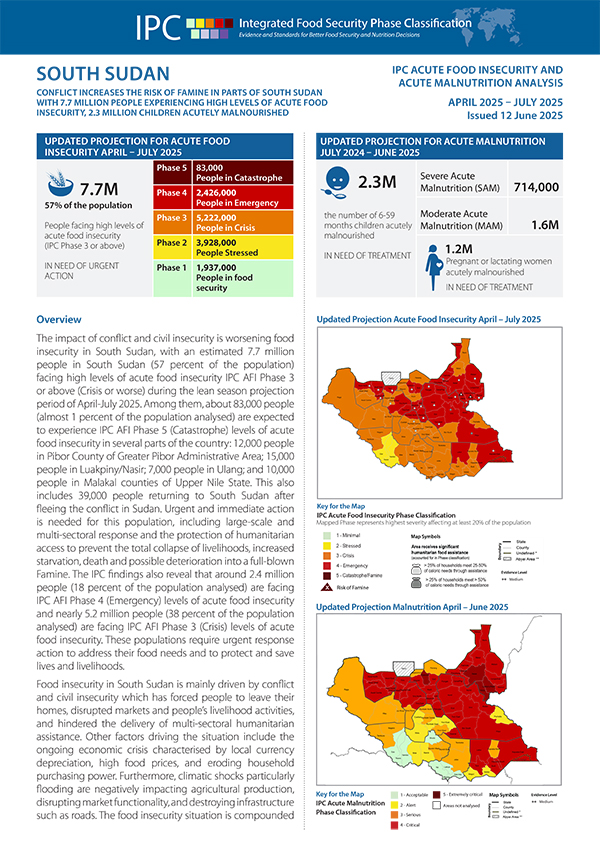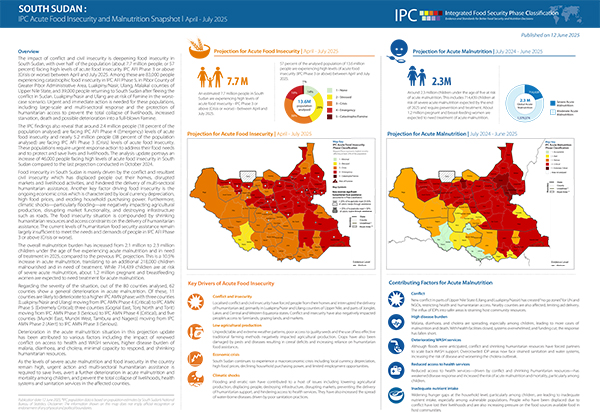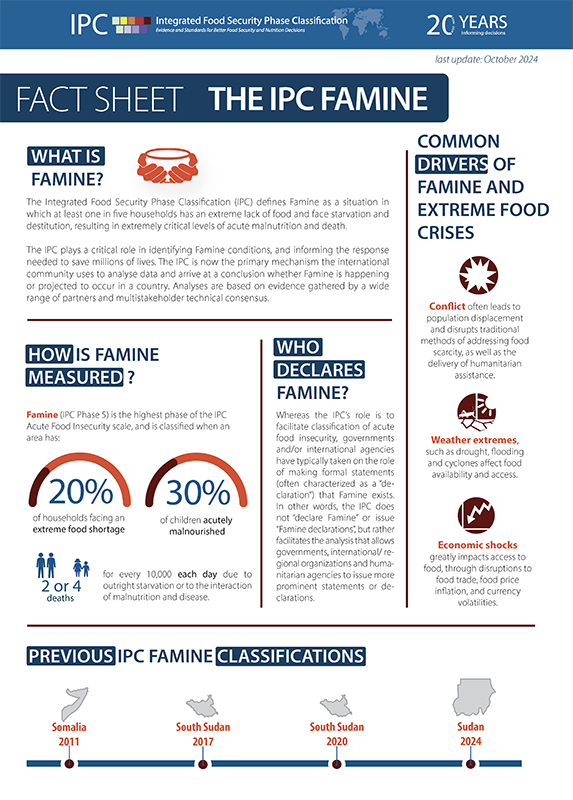
- © OCHA
SOUTH SUDAN: Conflict increases the risk of Famine in parts of South Sudan with 7.7 million people experiencing high levels of acute food insecurity, 2.3 million children acutely malnourished
The impact of conflict and civil insecurity is deepening food insecurity in South Sudan, with over half of the population (about 7.7 million people or 57 percent of the analysed population) facing high levels of acute food insecurity IPC AFI Phase 3 or above (Crisis or worse) between April and July 2025. Among them, 83,000 people are experiencing catastrophic levels of food insecurity IPC AFI Phase 5 (Catastrophe), particularly in Pibor County (Greater Pibor Administrative Area), and the counties of Luakpiny/Nasir, Ulang, and Malakal in Upper Nile State. This also includes 39,000 returnees who fled the conflict in Sudan and are currently classified in IPC AFI Phase 5.
In Luakpiny/Nasir and Ulang, which face a risk of Famine under a worst-case scenario, urgent and immediate action is needed for these populations, including large-scale and multi-sectoral response and the protection of humanitarian access to prevent the total collapse of livelihoods, increased starvation, death and possible deterioration into a full-blown Famine.
In addition, around 2.4 million people (18 percent of the analysed population) are in IPC AFI Phase 4 (Emergency) and nearly 5.2 million people (38 percent of the analysed population) are in IPC AFI Phase 3 (Crisis). These populations require urgent humanitarian response to meet food needs, protect lives and livelihoods, and reduce further deterioration.
The total acute malnutrition burden estimate has increased from 2.1 million to 2.3 million children under five in need of treatment — a 10.5 percent increase, representing an additional 218,000 malnourished children. Additionally, 714,439 children are at risk of severe acute malnutrition, and 1.2 million pregnant and breastfeeding women are expected to require treatment.
Out of the 80 counties analysed, 62 show a general deterioration in acute malnutrition: three counties (Luakpiny/Nasir and Ulang) moving from IPC AMN Phase 4 (Critical) to IPC AMN Phase 5 (Extremely Critical); three counties (Gogrial East, Tonj North and Torit) moving from IPC AMN Phase 3 (Serious) to IPC AMN Phase 4 (Critical), and five counties (Mundri East, Mundri West, Tambura and Nagero) moving from IPC AMN Phase 2 (Alert) to IPC AMN Phase 3 (Serious).
This deterioration is driven by renewed conflict, reduced access to health and WASH services, high disease burden (malaria, diarrhoea, cholera), and reduced humanitarian capacity.
With persistently high levels of acute malnutrition and food insecurity, urgent, coordinated, and multi-sectoral humanitarian action is critical to save lives, prevent further deterioration, and stabilise the situation in the most affected areas.
IPC Famine Factsheet
Learn more about IPC Famine Classification processes
The Integrated Food Security Phase Classication (IPC) defines Famine as an extreme deprivation of food. Starvation, death, destitution and extremely critical levels of acute malnutrition are or will likely be evident. The IPC plays a critical role in identifying Famine conditions, and informing the response needed to save millions of lives. The IPC is now the primary mechanism the international community uses to analyse data and arrive at a conclusion whether famine is happening or likely happening in a country. Analyses are based on evidence gathered by a wide range of partners and multistakeholder technical consensus.
Download IPC Famine Factsheet here
Join our mailing list



